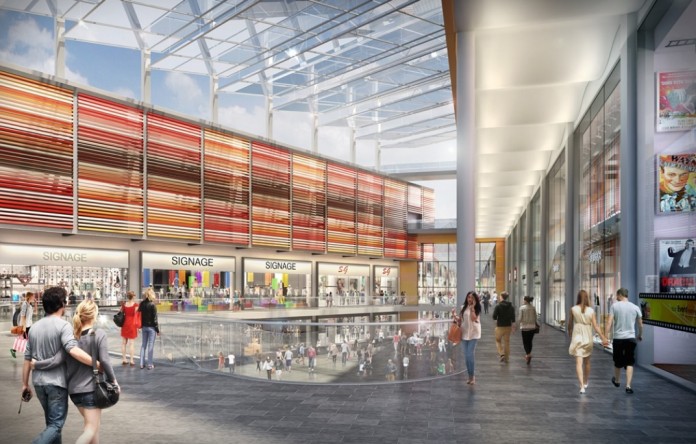As technology continues to change the way we shop, the in-store environment will become a retailer’s point of differentiation. Stephen Proudley, Director of Retail Agency at national commercial property consultancy, Lambert Smith Hampton (LSH) explains.
Responding to the demands of consumerism
The pace of technological change within the retail industry over the past decade has been nothing short of emphatic. The internet has removed many historical barriers to entry for opportunistic players and has altered the nature of the retailer-consumer relationship irrevocably.
Whether online or in-store, consumers now expect the same shopping experience across every channel they interact with. At the most basic level, this means the same products being available at the same time, and for the same price (or less).
However, in today’s ’24-hour’, ‘I want it now’ society, the lack of parity in relation to stock control and visibility in-store compared with online is a major issue and one which can negatively impact on the customer’s shopping experience, ultimately leading to a loss of sales revenue.
Improving channel strategies through RFID
Historically overlooked due to the significant initial capital outlay, the cost of implementing automated supply chain solutions such as radio-frequency identification (RFID) has fallen dramatically in recent years and is now beginning to play a crucial role in improving retailers’ channel strategies.
In essence, RFID allows retailers to track the real-time location of any product, from the moment it enters the store, to the moment it leaves through a series of smart labels, readers and transmitters. This enables the retailer to automatically re-order supplies of dwindling products without the need for manual stock checks. No longer will customers arrive at a store only to find that the product is out of stock.
More than just supply chain management
RFID, however, is about so much more than just supply chain management. It can also help retailers with their store configuration and product placement. By tracking customers’ shopping habits, it can give detailed insights into consumer behaviour, enabling the retailer to provide a similar experience to what they’ve been accustomed to online. For example, RFID tracking can tell retailers if certain items are always bought together, implying they should be placed together on display, in the same way that many websites do.
RFID readers can also be connected to an automated payment system, linking products to unique customer accounts and enabling queue-less stores, as is already the case with Amazon’s ‘Go’ concept in Seattle.
The importance of a personalised customer experience
The RFID infrastructure also helps create a personalised customer experience, with built-in readers in changing rooms providing information about the garments individuals are trying on, or digital signage and push notifications pointing out the location of preferred products based on previous purchases; the longer-term benefits of which make customers feel connected to the brand and keeps them coming back.
RFID also allows retailers to be much more dynamic by reducing levels of excess stock, thereby freeing-up under-utilised store space which could be used in a more effective way. Many larger retailers have already begun to fulfil click and collect orders in-store to save on logistics costs and prevent the customer from having to wait-in for a specific delivery slot.
However, it’s not just RFID technology which is having a positive impact on the retail industry.
Using technology to redefine the in-store environment
Recognising that most customer journeys may now start but not necessarily finish online, retailers are beginning to blend digital and in-store channels to re-define the customer journey. By introducing new technologies such as smart lighting, facial recognition and augmented reality, they are providing customers with a more engaging, inspiring and personalised consumer experience.
Rather than being driven by an overriding desire to have an Omni-channel presence no matter the cost, retailers are now harnessing the benefits of technology to refocus their channel strategy and deliver a greater sense of added value to their customers in return for brand advocacy and loyalty.
Property will become a source of competitive advantage
Right-sizing property portfolios to better align with future demand will enable retailers to maintain a source of competitive advantage to improve their bottom line.
For some, this will mean the reformatting of existing stores or relocation to smaller footprints, supported by high-tech regional distribution centres that facilitate the delivery of online orders in a faster and more harmonious manner. For others, there will be a continued polarisation of property portfolios, with smaller stores being consolidated into a single, larger dominant store covering the same catchment area of two-to-three stores previously.
Previously online-only retailers may also begin to seek a physical presence on the high street in a bid to stimulate brand loyalty and boost sales, by providing consumers with the opportunity to experience the products first hand.
A greater need for strategic advice
A detailed understanding of the driving forces behind evolving shopping habits, combined with strategic property advice will enable retailers to embrace technology in such a way that it becomes a real point of differentiation for the bricks and mortar retailer, rather than its nemesis.
Those retailers’ who fail to recognise the importance of aligning technology with property however, will very quickly witness the fickle nature of today’s increasingly experience-driven customers, who will no doubt vote with their feet and simply shop elsewhere.



















